DROPS Melody
A luxurious mix of merino wool and brushed alpaca
from:
3.19€
per 50 g
Content: 71% Alpaca, 25% Wool, 4% Polyamide
Yarn Group:
D (12 - 15 stitches)
/ 12 ply / chunky
Weight/length: 50 g = approx 140 m
Recommended needle size: 8 mm
Knitting tension: 10 x 10 cm = 12 sts x 14 rows
Care: Hand Wash, max 30°C / Dry Flat / Feltable
Superwash: no
Made in: Peru
Raw material origin: Alpaca and wool from South America, polyamide from Germany
This yarn has an Oeko-Tex® certification (certificate number 23.HPE.36896), Standard 100, Class II from the Hohenstein Institute. This means that is has been tested for harmful substances and is considered safe in human-ecological terms. Class II means the yarn is suitable to come in direct contact with the skin to a large extent, such as blouses, shirts, mattresses, etc.
DROPS Alpaca Party
30% discount until
Valid until 31.10.2025DROPS Melody is a soft and luxurious yarn made from superfine alpaca and merino wool. Warm and with a mohair-like look, it’s available in a sophisticated shade card ranging from soft beige and gray hues, to gorgeous reds and purples.
Being so light and soft, DROPS Melody is a great choice for oversize garments as well as accessories. It knits up quickly with big needles without the piece becoming heavy and it can be used as an effect yarn together with other qualities, to give garments extra volume and softness.
DROPS Melody is a great choice for patterns in Yarn Group D and a perfect fit for those made in the discontinued yarn, DROPS Vienna.
Read more about our products' sustainability here
Please be aware that the colours shown may vary from screen to screen in the same way that shades may vary slightly from dye lot to dye lot.
How do I care for this yarn?

Hand Wash, max 30°C / Dry Flat
All yarns have excess fibres (from production) that might come off as lint or shedding, in varied degrees that depend on how the yarn is spun. Brushed yarns ("hairier" yarns), like DROPS Melody, have more of these loose fibers than other yarns, and therefore, shed more. This of course also depends on what is worn under or over the garment, and whether this pulls at the yarn fibres. It’s therefore not possible to completely avoid shedding.
Below are some tips on how to take care of garments in brushed yarns like DROPS Melody:
- Once the garment is finished - and before you wash it (consider just airing the garment) - shake it vigorously so the looser hairs come off
- Avoid using a lint roller, brush or any other method that pulls at the yarn.
- Place the garment in a plastic bag and put it in your freezer - the temperature will cause the fibres to become less attached to each other, and excess fibres will come off easier. Leave in the freezer for a few hours before taking it out and shaking it again.
- Hand wash at 30ºC - separately - with wool detergent without enzymes or optical brighteners.
- Don’t let the garment soak. Move the garment gently back and forth, do not rub or squeeze it.
- Rinse the garment until the rinse water is completely clear, making sure the water temperature stays uniform.
- Do a light centrifugation of the garment (about 800rpm), choosing a program that DOES NOT take in water at the start. Or press carefully the water out of the garment with a dry towel. The garment shouldn’t be twisted or rolled.
- To dry the garment, shape it and lay it flat - do not hang - ideally on a warm bathroom floor or on top of a drying rack in a room with good air circulation. Never dry the garment in direct sunlight.
- Once the garment is dry, shake once more the garments so that the hairs rise and any excess fibers can come off.
Note: If you are washing a project made with this yarn combined with another, the general guideline is to follow the washing instructions for the most delicate of the yarns you are working with.
Thinking about felting this yarn?
See how this yarn looks before and after felting:
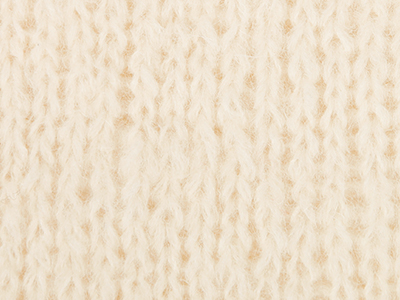
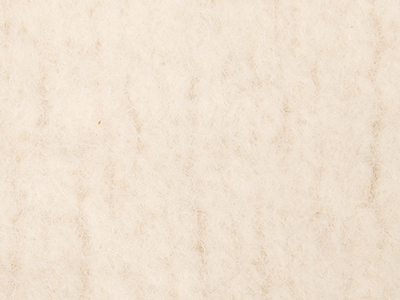
Needles: 7.00 mm
Before: 13 sts x 15 rows
After: 18 sts x 30 rows
Do you have a question about this yarn?
See a list of frequently asked questions (FAQ) about our yarns.
1) What type of fibers make the DROPS yarns?
Yarn can be made from a large number of natural and synthetic fibers. DROPS carries mainly yarns made from wool, cotton, alpaca, linen, mohair and silk. Each fiber type has its own qualities, and they are often mixed to take advantage of the best properties of each one. Coarse yarn has the advantage of being stronger and more durable, and finer fibers offer more softness and comfort. Here a bit about the main fibers we carry:
Alpaca:
Alpaca fleece is the natural fiber harvested from an alpaca, and it is similar in structure to sheep wool fiber. Its softness comes from the small diameter of the fiber, similar to merino wool. It is a soft, durable, luxurious and silky natural fiber. Yarn made from alpaca fibers does not felt or pill easily, and it can be light or heavy in weight, depending on how it is spun. While similar to sheep’s wool, it is warmer, not prickly, and has no lanolin, which makes it hypoallergenic. Alpacas come in 22 natural colors, with more than 300 shades from a true-blue black through browns-black, browns, white, silver and rose-greys.
Mohair:
This fiber comes from the Angora goats, and it's considered a luxury fiber. Mohair yarn is warm as wool, but much lighter in weight; it is durable, dyes well and does not felt easily. Mohair fibers have also a distinctive luster created by the way they reflect light. Despite being a hard fiber, mohair is usually spun into a very fluffy yarn, resulting in airy and lustrous garments.
Wool:
The wool fibers come from the skin of sheep and are relatively coarse fibers. Two striking characteristics of wool are its susceptibility to heat and its felting property, which is caused by the scales on the surface. Depending upon the breed of sheep, the appearance of the wool varies.
Wool from Merino sheep is considered the finest type of wool, having as characteristics that is finely crimped and soft. All the Merino wool in the DROPS yarns has its origins in South America, coming from sheep that have not been subject to Mulesing.
Pure new wool is wool made directly from animal fleece, and not recycled from existing wool garments.
Machine washable wool is wool treated chemically to minimize the outer fuzzy layer of the fibers, and be therefore fitable for machine wash (see Superwash).
Silk:
The silk fiber is a fine continuous fiber produced from the cocoon of a moth caterpillar known as the silkworm. While silkworm is cultivated, the wild or tussah silk is obtained from uncultivated silkworm cocoons. Silk fiber is one of the strongest natural fibers and makes a wonderful knitting yarn. It blends really well with other fibers, especially wool. Silk also dyes beautifully with natural dyes.
Vegetable fibers:
There are several varieties of vegetable fibers, found in the cell walls of plants or vegetables. Of all the varieties, two are recognized as major knitted or textile fibers. They are cotton and linen.
Cotton is the fiber surrounding the seeds in a cotton pod, and it is almost pure cellulose. Cotton is usually white in color but there are green and brown varieties as well. The cotton fiber is most often spun into yarn or thread and used to make a soft, breathable textile that is good for summer clothing and accessories, making a weaker yarn than silk or linen but stronger than wool.
Mercerized cotton is cotton that has been through a mercerization treatment. This treatment gives cotton fabrics and threads a lustrous yarn that is more lustrous than conventional cotton. It is also stronger, takes dye a little more readily, makes the yarn more resistant to mildew and reduces lint. It also may not shrink or lose its shape as much as "regular" cotton.
Linen is a fiber derived from the stalk of the flax plant that is durable and stronger than any other fiber. The linen fiber is relatively soft, straight and lustrous and becomes more beautiful with age. Linen is more comfortable to wear in hot temperatures than cotton, due to the fact that it absorbs moisture better and dries more quickly.
Other materials used in our yarns include synthetic fibers such as acrylic, viscose, polyamide (nylon) and polyester. These fibers are used mostly to give strength to a yarn (like our sock yarn, DROPS Fabel) or a special kind of structure (like our blown yarn, DROPS Air).
The polyamide fibre, commonly known as nylon, is very strong, durable, lightweight, easy to care for (can be machine washed and dried), and elastic, which makes it perfect for blending with other fibres to produce hard-wearing yarns like sock yarn.
Compared to polyester, polyamide is softer and more flexible, but it also absorbs more water and dries slower.
3) What type of information can I find on the DROPS yarn labels?
All DROPS yarn labels include information about fiber content (wool, cotton, etc.), weight in grams and ounces, length in meters and yards, washing instructions and symbols (explained here), color number, dye lot number and yarn group information.
4) What are the DROPS yarn groups?
All DROPS yarns are classified into 6 different thickness groups (A to F). Yarns in a same group have similar knitting tension/gauge, and can therefore be interchanged in patterns; however the length may be different, so when substituting always calculate the amount of meters/yards needed for the pattern to know the amount of yarn you need to get.
5) Can I use a different yarn than the one mentioned in the pattern?
Yes, as long as the yarn can be worked in the same knitting tension/gauge. Always swatch to make sure you get the same number of stitches in width and rows in height as given in the pattern.
Remember that different yarns with different textures, will give the garment different looks. The yardage/length may also be different, so when substituting always calculate the number of yards needed, in order to know the amount of yarn you need.
Read more about how to calculate the amount of an alternative yarn - and how to replace 1 thread of a yarn with 2 or more of another, here.
6) What does it mean when a yarn is “Superwash”?
A superwash wool is a special wool product that has been treated or processed in a way that allows it to be machine washable. Many people are afraid to work with wool because it is so easy to shrink (though some shrink wool on purpose) and superwash wool can allow them to work with great fibers without worry. (Read more here).
7) What does “Oeko-Tex® certified” means?
The Oeko-Tex® Standard 100 was introduced at the beginning of the 1990s as a response to the needs of the general public for textiles which posed no risk to health. The Oeko-Tex® Standard 100 is a globally uniform testing and certification system for textile raw materials, intermediate and end products at all stages of production. The test for harmful substances comprise substances which are prohibited or regulated by law, chemicals which are known to be harmful to health, and parameters which are included as a precautionary measure to safeguard health.
For more info go to www.oeko-tex.com
10) How accurate are the colours on the shade cards online?
When obtaining images for the shade card, we do our best to achieve the highest level of color accuracy. Unfortunately, we cannot guarantee how images will appear on your computer screen. Every monitor displays color differently, some colors might look darker than they really are, and some colors might be more saturated on some screens. If you experience that many of the yarn colors looks different on your screen than the actual color of the skeins, you can adjust the setting on your monitor.
11) What is a micron? What does super fine / extra fine mean?
The fineness of yarn fibers is measured in microns (thousands of millimeters). Super fine alpaca wool is 26-28 microns. Fine merino wool is less than 21.5 microns and extra fine merino is under 19.5 microns. The less microns the softer and more delicate a quality can be, the more microns the more hard wear the quality will be.
The reason why the microns in a yarn’s fibers are important is that the yarn will eventually become something else, and how delicate or coarse a yarn is will determine in part what we use it for. That’s why we recommend the softest yarns (like DROPS Baby Merino) for baby clothing, or why we choose to use a more hard wear yarn like DROPS Snow, for a seating pad or slipper.
12) Why are the colours in my skeins of print yarn different?
The reason why two skeins of a same print yarn look different can be 1) that both skeins are part of different dye lots; 2) that the skeins have been dyed using a technique called "magic print" (the one used for example in DROPS Delight), which provides unique patterns and smooth colour transitions to each skein, meaning also that within one dye lot, lighter or darker varieties might appear. This is no fault or defect, but part of the yarn's character.
13) My store doesn’t have the colour I want, what can I do?
If your DROPS store doesn’t have the yarn colour you want, try contacting a DROPS Super Store (the ones with the golden badges) - they will make sure to get a hold of the colour even if they don’t have it in stock themselves. See a list of all DROPS stores here.
14) Where can I find a specific dye lot of a colour?
Always try contacting your DROPS store first. If they do not have the dye lot you want we recommend you to ask other knitters and crocheters in the DROPS Workshop in Facebook or Ravelry, which may have the dye lot in their stash and might be willing to part from it.
Yarn sheds because there's not enough twist to hold all of the fibers together. All yarns have excess fibers (from production) that might come off as lint or shedding, in varied degrees that depend on how the yarn is spun. Brushed yarns ("hairier" yarns) like DROPS Melody, have more of these loose fibers than other yarns, and therefore shed more. Shedding also depends on what is worn under or over the garment, and whether this pulls at the yarn fibers. It’s therefore not possible to guarantee that there will be no shedding.
Below are some tips on how to get the best result when working with hairier yarns:
- When the garment is finished (before you wash it) shake it vigorously so the looser hairs come off. NOTE: do NOT use a lint roller, brush or any method that pulls at the yarn.
- Place the garment in a plastic bag and put it in your freezer - the temperature will cause the fibers to become less attached to each other, and excess fibers will come off easier. Leave in the freezer for a few hours before taking it out and shaking it again.
- Wash the garment according to the instructions on the yarn label. Garments worked with hairier yarns usually need to be shaken once dry after washing, so that the hairs rise and any excess fibers can come off.
Pilling is a natural process that happens to even the most exclusive of fibers. It's a natural sign of wear and tear that is hard to avoid, and that is most visible in high friction areas of your garment like a sweater's arms and cuffs.
You can make your garment look as new by removing the pilling, using a fabric comb or a pill/lint remover.
How can I replace this yarn?
If you are looking to replace this yarn with another DROPS yarn, you can use another yarn within the same yarn group, or try our yarn converter!
Read more about replacing yarn.Have a problem with the DROPS yarn you purchased?
When you purchase yarn from the shade cards or patterns on our site, you are not buying directly from DROPS but from one of the hundreds of DROPS stores around the world. It is therefore important that you take contact with the DROPS store where you bought the yarn, and that you save the labels of all the skeins you purchased (they are your warranty).
The DROPS store you contact will assist you and escalate the claim if necessary. Find a list of DROPS stores here.
Comments / Questions (145)
![]() Luisa wrote:
Luisa wrote:
È possibile utilizzarlo insieme al filato "Cotton Merino"? Se sì quali ferri sono consigliati? Grazie e buona giornata =)
27.10.2018 - 10:15DROPS Design answered:
Buongiormo Luisa, Melody è un filato molto vaporoso che va lavorato con ferri abbastanza grossi, mentre Cotton Merino è un filato più sottile. Potrebbe provare a fare un campione con ferri grandi e vedere il risultato, ma solitamente non vengono utilizzati insieme. Buon lavoro!
16.11.2018 kl. 08:57Catia wrote:
Hello, I would like to knit a cape for a kid. It's in stockinette stitch with the borders in raspberry stitch. This is the only wool with the right gauge but since it is for a1 year old kid, I don't think that it would do, with the fuzziness and the care required. You give alpaca silk and sky (2 threads) as alternative but they are both fuzzy. I tried with 2 threads of big merino and also Alaska, but the gauge doesn't work.
02.09.2018 - 23:16DROPS Design answered:
Hello, Have you tried our newest yarn, DROPS Sky? If knitted double, you can get the gauge of DROPS Melody. And it is very soft but not fuzzy. Happy Knitting!
03.09.2018 kl. 16:24Catia wrote:
Only the stitches but not the rows, way to big. And a bit to stiff too for a cape. Do you have any suggestion on which other yarn I could use? Something for kids and not to stiff. Thank you so much in advance :-) and sorry for the long question.
02.09.2018 - 23:08DROPS Design answered:
Hello, It is stated on the page: Knitting tension: 10 x 10 cm = 14 sts x 19 rows. We recommend you to check ther yarns of Yarn Group D. Happy Knitting!
03.09.2018 kl. 16:19
![]() Alexandra Thomssen wrote:
Alexandra Thomssen wrote:
Hallo, ich möchte das Modell Star DROPS 137-20 stricken. Könnte ich auch das Garn Air verwenden ? Das Viereck muesste doch eigentlich mit jedem Garn verstrickbar sein ? Die Ärmelausschitte sollen doch nachdem eine bestimmte Höhe in cm gestrickt wurde, gearbeitet werden? Vielen Dank fuer eine rasche Antwort :)
21.02.2018 - 17:17DROPS Design answered:
Liebe Frau Thomssen, Melody sowie Vienna gehören zur Garngruppe D aber Air gehört zur Garngruppe C und es würde nicht passen, ohne die Anleitung neu zu kalkulieren. Aber mit 2 Fäden Brushed Alpaca Silk kann es doch passen, errinern Sie sich immer zuerst eine Maschenprobe zu stricken. Viel Spaß beim stricken!
22.02.2018 kl. 10:06
![]() Janne Christine Lemicka wrote:
Janne Christine Lemicka wrote:
Hvorfor har dere sluttet med farge nr 11, plomme? Kommer det eventuelt en annen lillafarge?
05.01.2018 - 22:48DROPS Design answered:
Hei Janne. Noen farger utgår, ofte hvis det ikke er stor nok etterspørsel. Nye farger blir fortløpende vurdert, men det er ingen mye farger i Melody som kommer i nærmeste fremtid. mvh Drops design
26.01.2018 kl. 10:54
![]() Gryt Zijlstra wrote:
Gryt Zijlstra wrote:
Prachtig vest met dubbele draad van gemaakt . Eerst erg harig maar na verloop van tijd gaat dit over. Draagt heerlijk en je hoeft het bijna niet te wassen . Het draagt schoon. Erg te vreden
04.08.2017 - 20:16
![]() Lise wrote:
Lise wrote:
Jeg har strikket en sweater til min datter i melody garn, men den er ubrugelige, fordi den fælder og ødelækker alt den kommer i nærheden af. Hvad kan jeg gøre får at hun kan komme til at bruge denne sweater, som jeg har lagt mange timer i?
28.04.2017 - 08:12DROPS Design answered:
Hej Lise, Åh så kedeligt at du ikke vidste det. Alle fine langhårede garner fælder mere eller mindre. Nogle kan ikke holde det ud og andre tænker ikke på det. Man kan børste de løse fibre væk med en blød børste og ellers kan vi sige at det bliver mindre og mindre løse fibre jo mere man bruger den. Held og lykke!
12.05.2017 kl. 14:00
![]() Silke wrote:
Silke wrote:
Hi, Are you planning on adding shades of blue?
26.02.2017 - 23:52DROPS Design answered:
Dear Silke, thanks for your feedback. Happy knitting!
27.02.2017 kl. 13:42
![]() Kaja Johnsen wrote:
Kaja Johnsen wrote:
Jeg forstår ikke helt fargekodene hos drops. Jeg har bestilt drops melody i fargen mørk jeansblå (uni colour 07), og så vil jeg gjerne kombinere dette garnet med en annen garnkvalitet i samme farge. Er det noen sammenheng i fargekode/navn mellom de ulike garnkvalitetene? Fargen uni colour 07 i karisma ser feks helt ulik ut, mens den som heter bare jeansblå ser ganske lik ut. Mvh. Kaja
21.02.2017 - 14:47DROPS Design answered:
Hej Kaja. Nej, de faar ikke samme farvekode. Men vil du gerne vide hvilken farve du bedst kan kombinere, saa kontakt din DROPS butik, saa de kan hjaelpe dig med den bedste kombination.
21.02.2017 kl. 15:58
![]() Luciana wrote:
Luciana wrote:
Spettacolare! Colori bellissimi e lavorato con i ferri n. 7, come indicato, per una sciarpa traforata, rende tantissimo! Veramente consigliato!!!
30.01.2017 - 15:28
![]() Maria wrote:
Maria wrote:
Hi! Are the yarns brushed alpaca silk and melody in light sea green actually the same colour? I'm planning to knit a shawl and a hat. Will they match?
20.12.2016 - 23:04DROPS Design answered:
Dear Maria, for any help choosing colours you are welcome to contact your DROPS store even per mail or telephone, they will have tips & advices for you. Happy knitting!
21.12.2016 kl. 09:51
![]() Kerstin wrote:
Kerstin wrote:
Da das Garn Melodie sehr fusselt, würde ich gern bei dem Model ml-008 einen Faden Melodie und einen air verwenden. Wäre das eine Alternative?
18.12.2016 - 15:59DROPS Design answered:
Liebe Kerstin, hier finden Sie mehr Informationnen über Garnalternative. Ihr DROPS Laden wird Ihnen auch gerne hilfen, eine Alternative zu finden. Viel Spaß beim stricken!
19.12.2016 kl. 10:11
![]() Crissie Grehan wrote:
Crissie Grehan wrote:
Love your patterns and wool, not able to wear wool garments what is best alternative. Thank you
28.09.2016 - 15:18
![]() Silje wrote:
Silje wrote:
Når man sorterer garn på kvalitet, kommer Melody opp under Merino. Det skal vel ikke være slik?
02.09.2016 - 10:02
![]() Maria wrote:
Maria wrote:
Vest gebreid van dit garen. Het verhaart echt heel erg! Ook na wassen blijft het haren geven. Waar je hebt gezeten of gelopen en ook je kleding zit onder. Wat ontzettend jammer, het is zulk mooi garen in zulke mooie kleuren.
28.07.2016 - 22:42
![]() Diana Kerkhoven wrote:
Diana Kerkhoven wrote:
Hallo is er ook een alternatief voor dit garen?
05.06.2016 - 08:55DROPS Design answered:
Hoi Diana. Wij hebben op dit moment geen alternatief in dezelfde dikte, maar je kan vervangen door een dubbele draad uit garencategorie C, zie hier het overzicht van garencategorieën
06.06.2016 kl. 11:09
![]() LEVY wrote:
LEVY wrote:
Bonjour, je voudrais savoir si Melody est aussi douce que Air sans risque de gratter au contact de la peau comme la laine mohair, merci
21.05.2016 - 17:33DROPS Design answered:
Bonjour Mme Levy, la sensibilité de chacun(e) étant différente, je vous invite à contacter votre magasin DROPS, même par mail ou téléphone, qui pourra vous apporter une réponse plus individuelle. Bon tricot!
23.05.2016 kl. 10:29
![]() Margarida Trigo wrote:
Margarida Trigo wrote:
Adoro este fio! Como vi que tinha muito pelo e o ia soltando, logo que fiz a amostra, decidi pô-lo durante 3 dias no congelador, antes de tricotar e... 😀 não larga pelos nenhuns! De qualquer modo, logo que termine a peça, vou voltar a congelar por 24h. Mas aqui fica a sugestão!
19.04.2016 - 11:25
![]() Claudia wrote:
Claudia wrote:
Ich habe mir auch aus der Wolle einen Pullover gestrickt. Die Wolle ist super weich, aber leider untragbar, weil man überall Unmengen an Fusseln hinterläßt. Auch Waschen hat nicht geholfen, im Gegenteil, jetzt scheint er nur noch mehr zu Fusseln. Die Antwort von DROPS zu dem ähnlichen Kommentar finde ich nicht nachvollziehbar. Die Wolle AIR ist ähnlich flauschig und fusselt gar nicht. Dass Melody zum Fusseln neigt, finde ich eine Untertreibung. Schade, denn sonst wäre es die perfekte Wolle.
01.04.2016 - 17:34
![]() Pittke, Evelyn wrote:
Pittke, Evelyn wrote:
Ich habe mir die Jacke OZAN ROAR mit "Melody" vorgenommen. Dieses Garn haart dermaßen beim Stricken, dass ich dieses Projekt aufgegeben habe. In meinem Umkreis lagen überall dicke Wollflusen herum, ich verbrauchte 2,5 Klederrollen, um mich jeweils nach dem Stricken zu säubern. Für mich ist die Wolle unzumutbar, schade, da wunderbar weich und tolle Farben.
31.03.2016 - 12:39DROPS Design answered:
Liebe Evelyn, ja ein so fluffiges und haariges Garn wie Melody neigt zum Fusseln. Vielleicht ist es ein Tipp, dass Sie das Garn vor dem Verarbeiten ein Zeitchen in den Tiefkühler legen.
31.03.2016 kl. 20:12
![]() Christina Jung wrote:
Christina Jung wrote:
Liebes Drops-Team, ich möchte Modell 168-6 stricken. Bin etwas kratzempfindlich. Können Sie mir das Garn Melodie empfehlen? Welches Garn könnte ich alternativ nehmen und in welchen Mengen? Vielen Dank. Christina
29.03.2016 - 13:42DROPS Design answered:
Liebe Christina, für hautempfindliche Personen würde ich Melody nicht empfehlen, aber dieser Mantel ist nicht so einfach mit einem anderen Garn zu arbeiten, da er sonst eine ganz andere Optik erhält. Sie müssten das Garn einmal probieren, es ist nicht kratzig, aber wie alle Flauschgarne etwas fusselig.
29.03.2016 kl. 17:48
![]() Marie wrote:
Marie wrote:
Schöne weiche Wolle! Angenehm auf der Haut, bin sonst sehr kratzempfindlich. Leicht und wärmend. Habe Modell 167-23 gestrickt einmal in perlgrau und in kirsche. Haart zu Beginn stark (vor allem bei heller Wolle getragen mit dunkler Kleidung), lässt aber mit der Zeit nach. Ist sehr gut zu verstricken. Wünsche mir noch weitere Modelle mit dieser Wolle.
17.03.2016 - 16:53
![]() Clairette Tricote wrote:
Clairette Tricote wrote:
Bonjour, je souhaiterai d'avoir si la Melody replace la Vivaldi. Merci!
15.02.2016 - 17:02DROPS Design answered:
Bonjour Clairette, Melody appartient au groupe D alors que Vivaldi appartenait au groupe C - vous pouvez remplacer Vivaldi par 2 fils Kid-Silk - voir ici - ou par 1 fil Brushed Alpaca Silk - cliquez ici pour en savoir plus sur les alternatives. Bon tricot!
16.02.2016 kl. 13:08
![]() Alexandria McDade wrote:
Alexandria McDade wrote:
Can this yarn be felted?
15.01.2016 - 17:37DROPS Design answered:
Dear Mrs McDade, this is not suitable for felting - see list here. Happy knitting!
16.01.2016 kl. 11:31






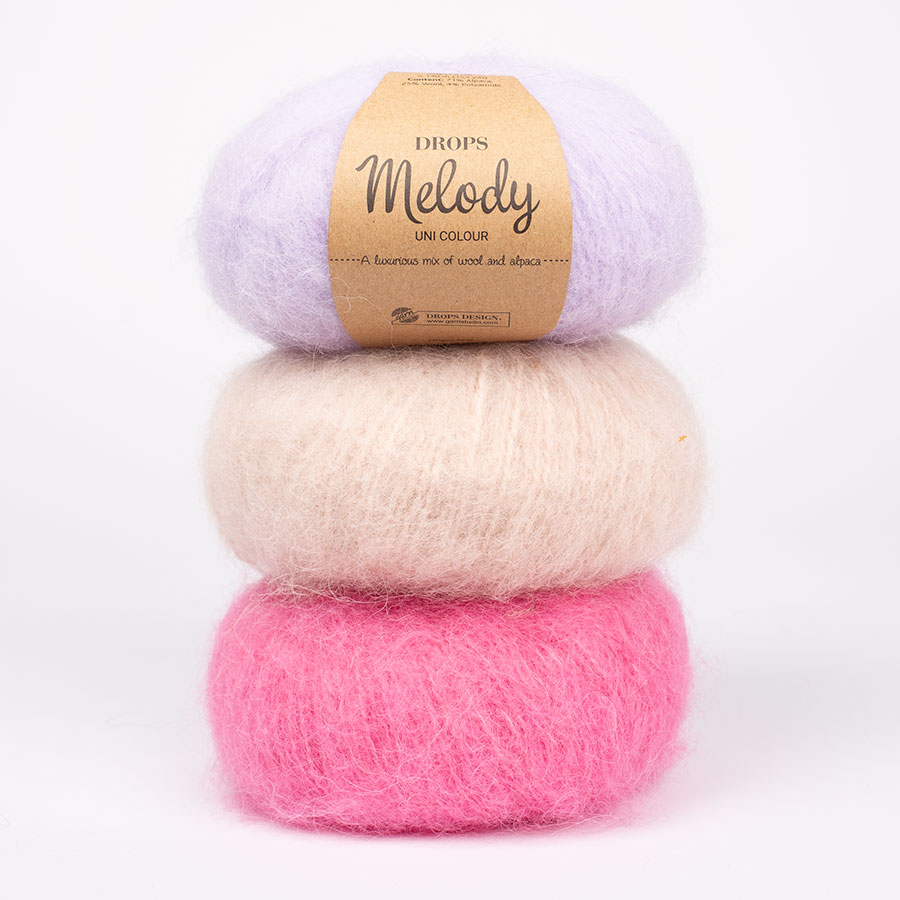
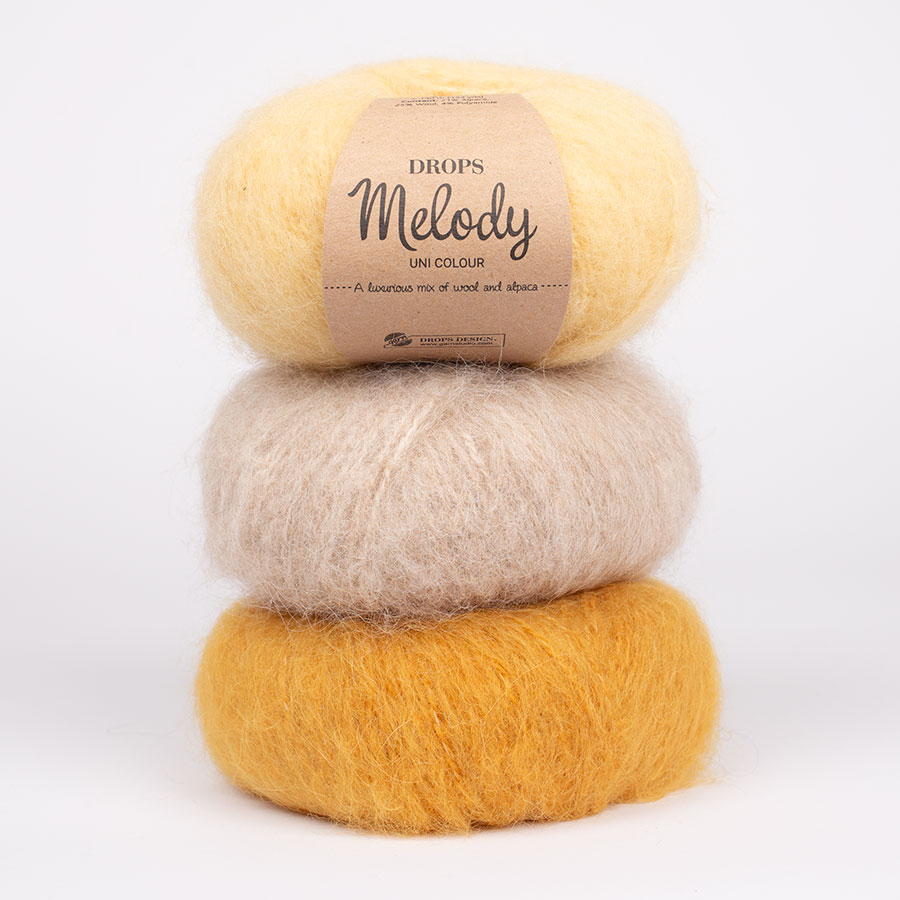
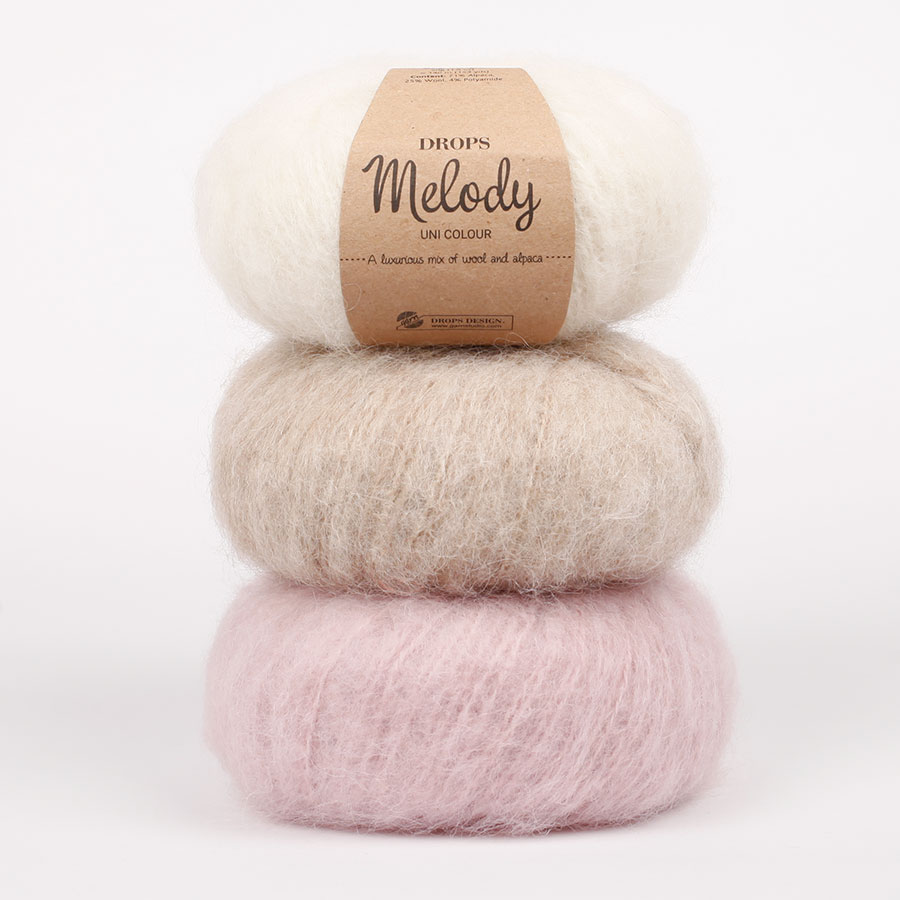
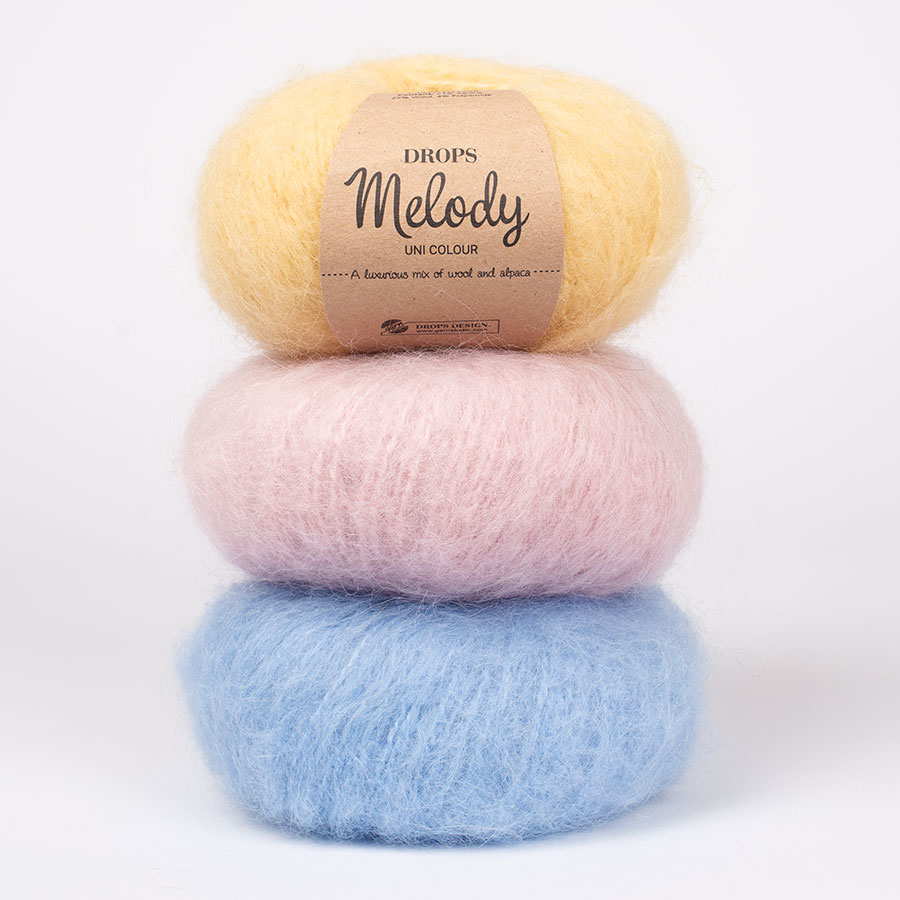
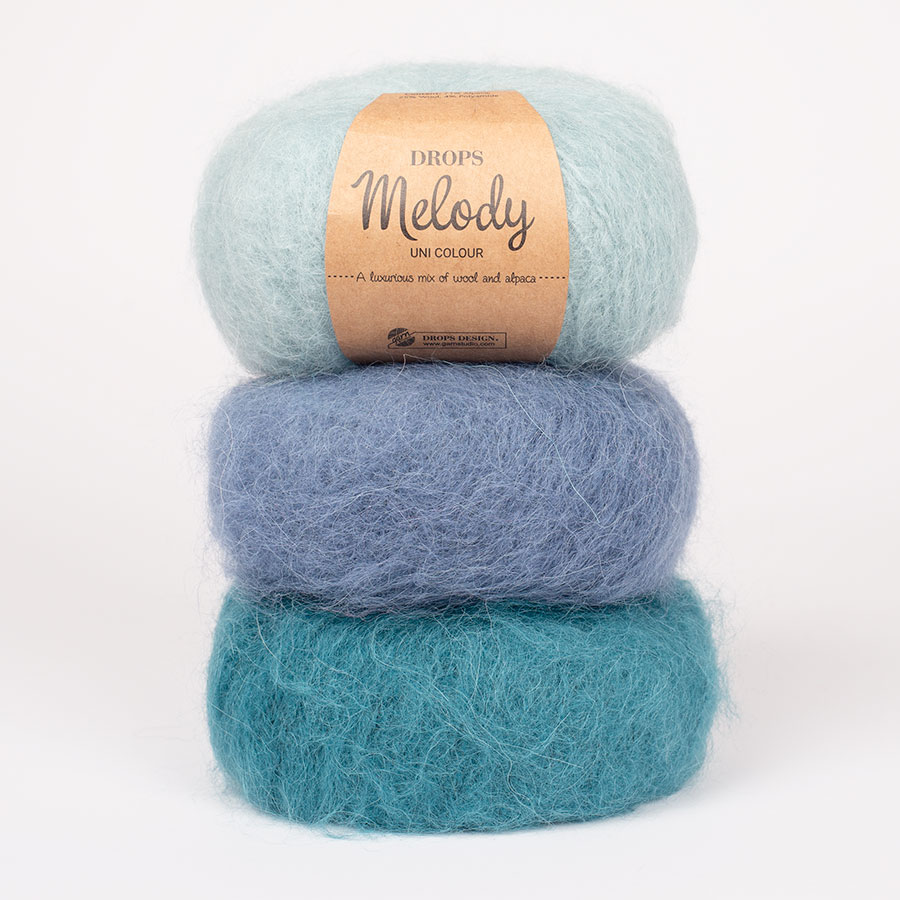
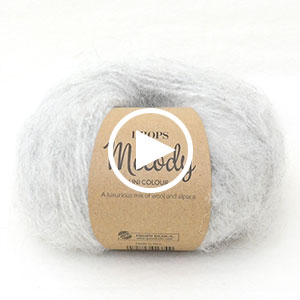


























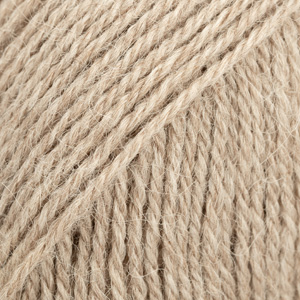







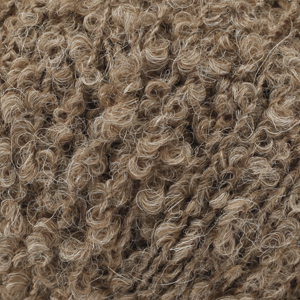








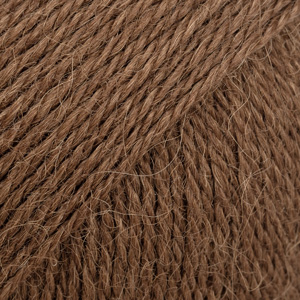






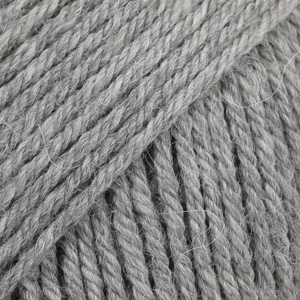







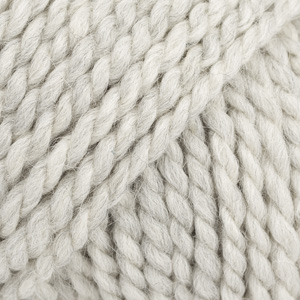






















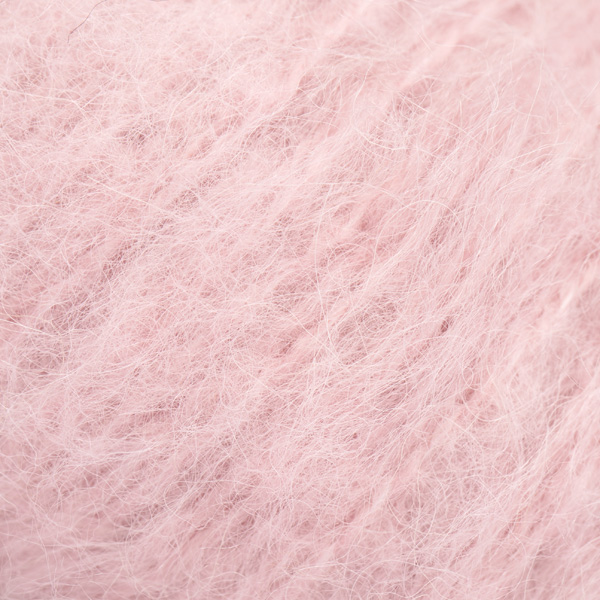
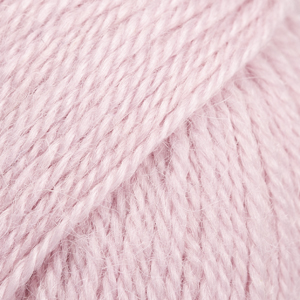




















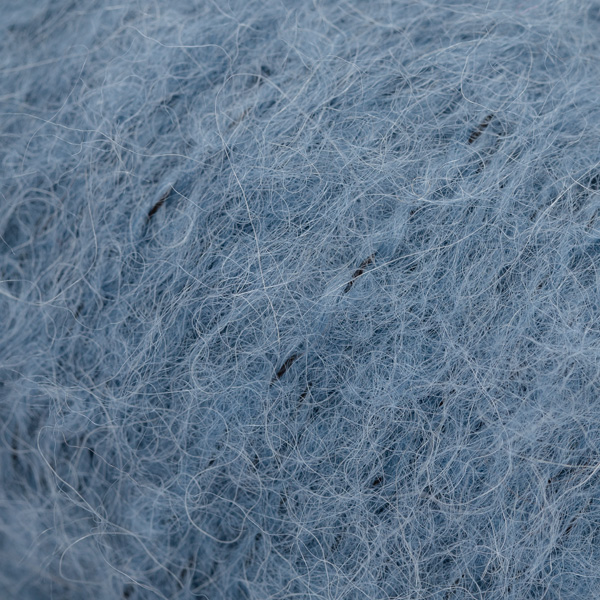









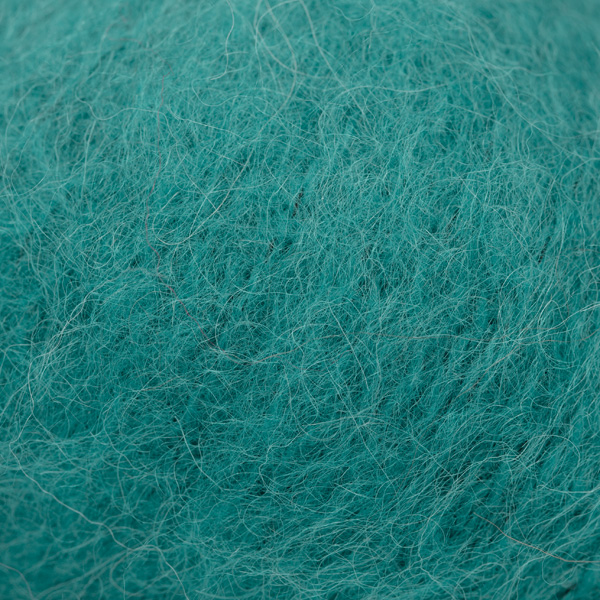




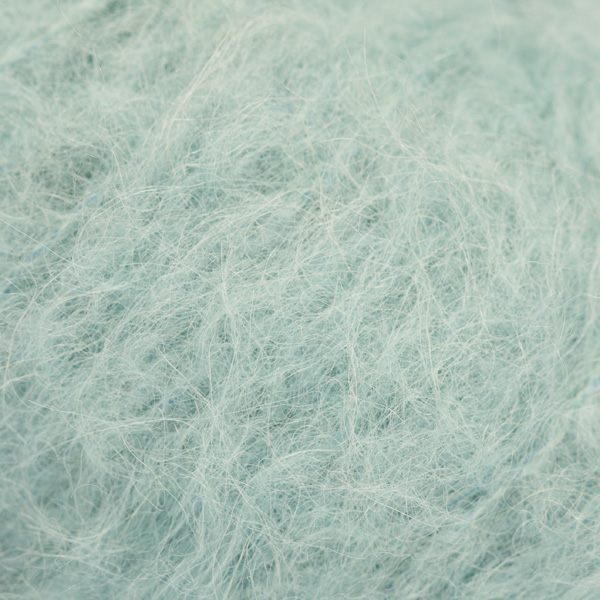








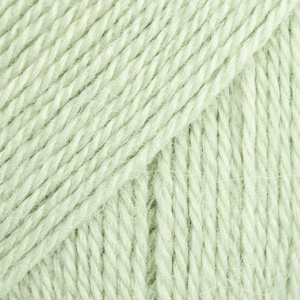







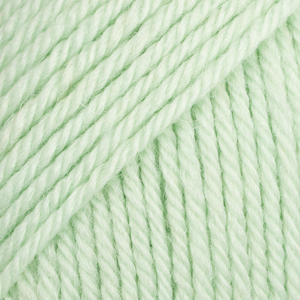



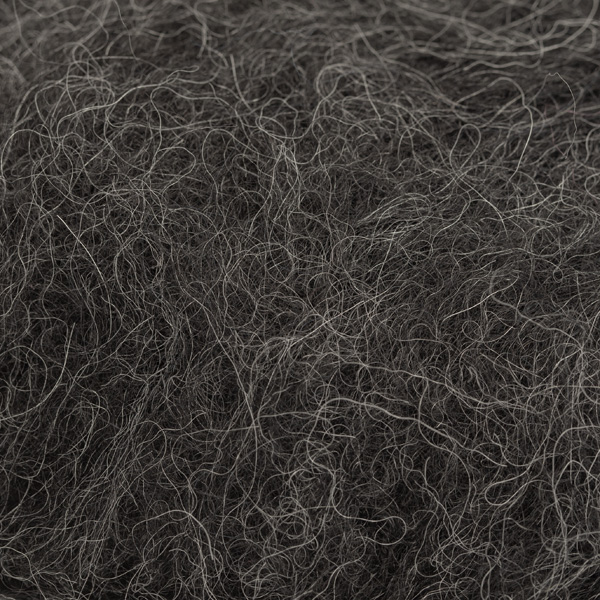






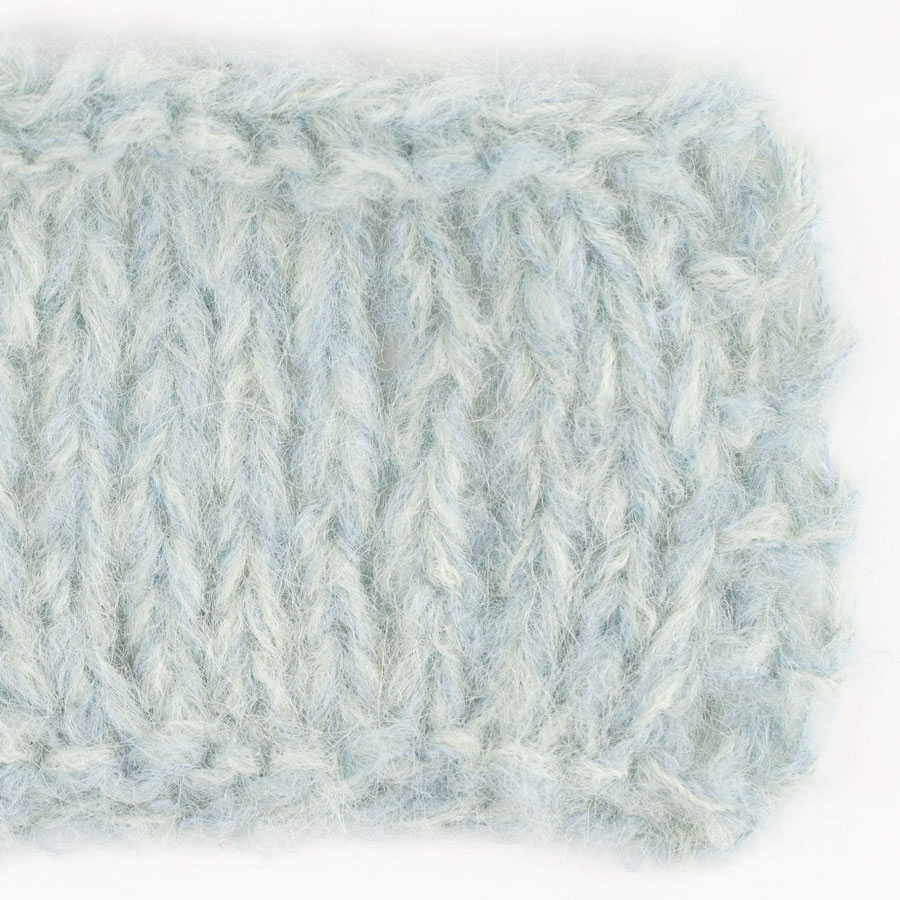
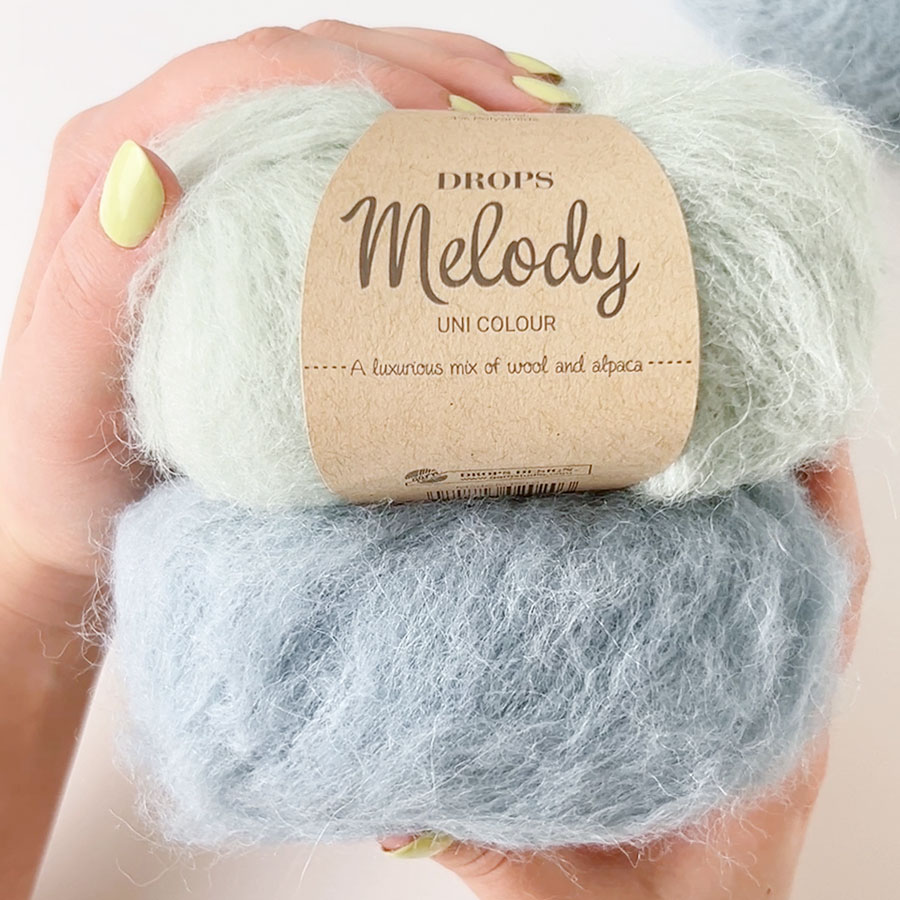
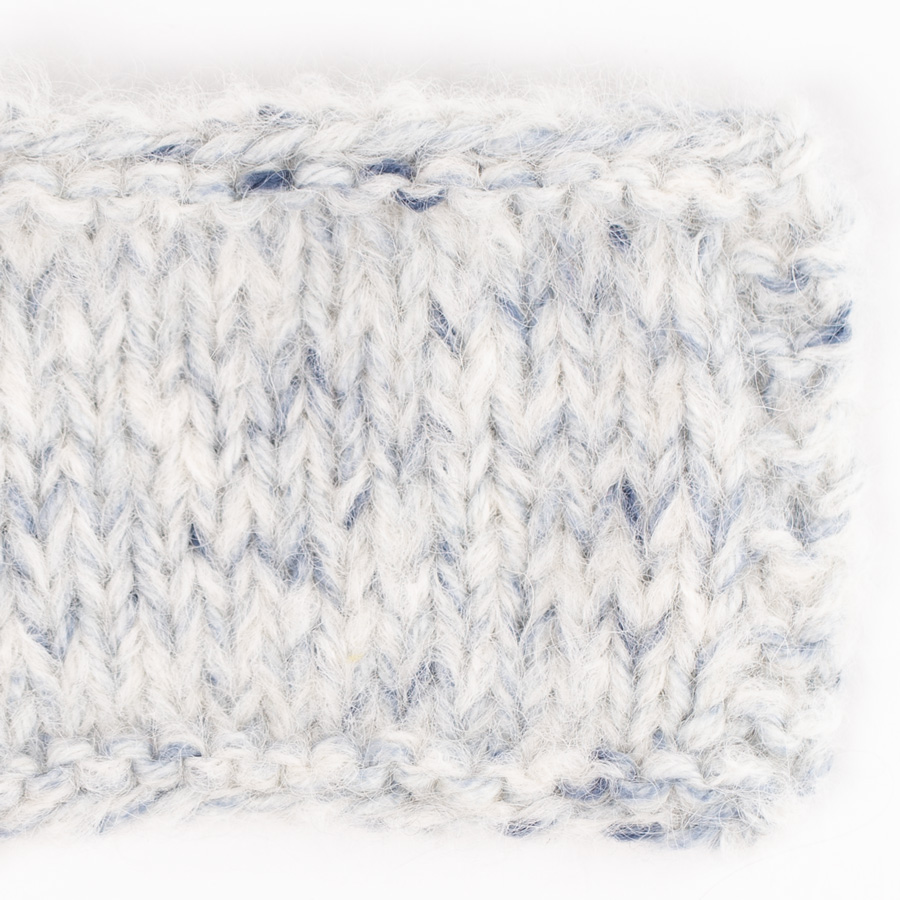
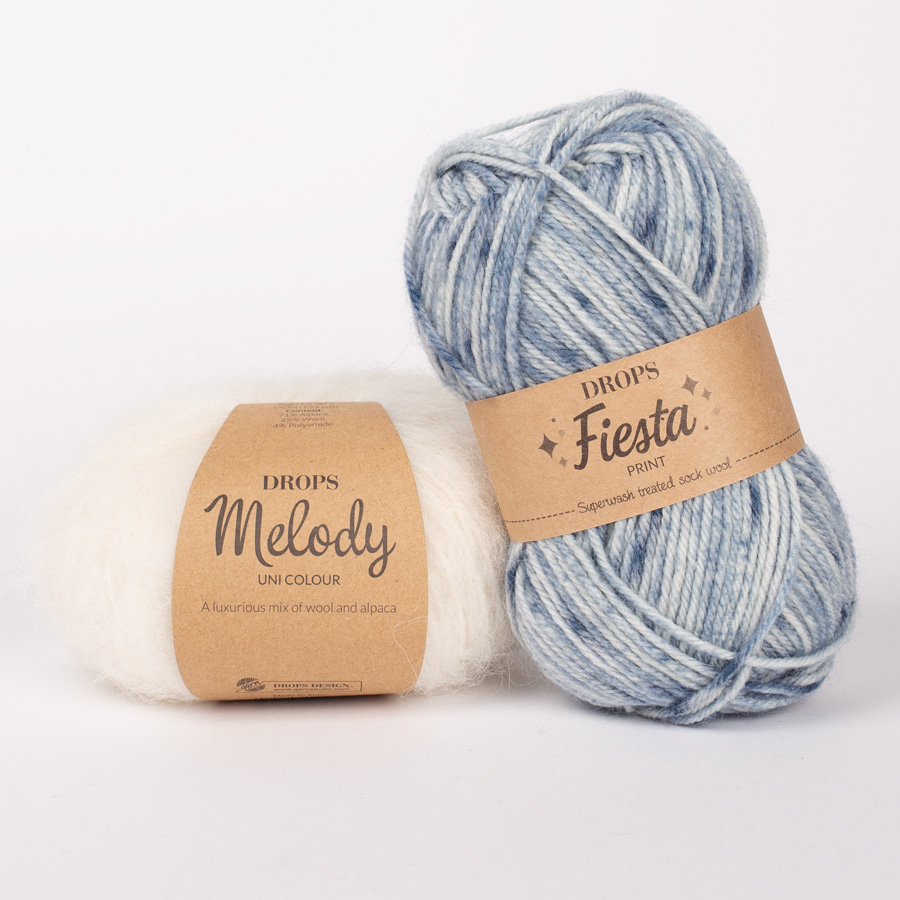
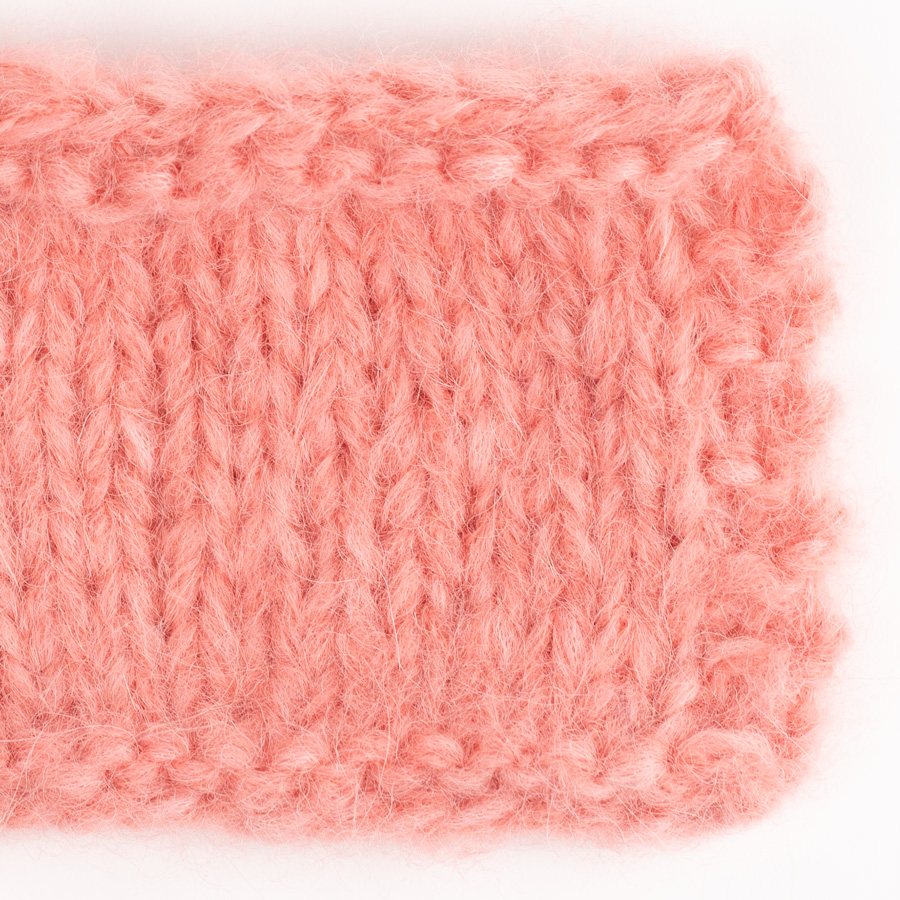

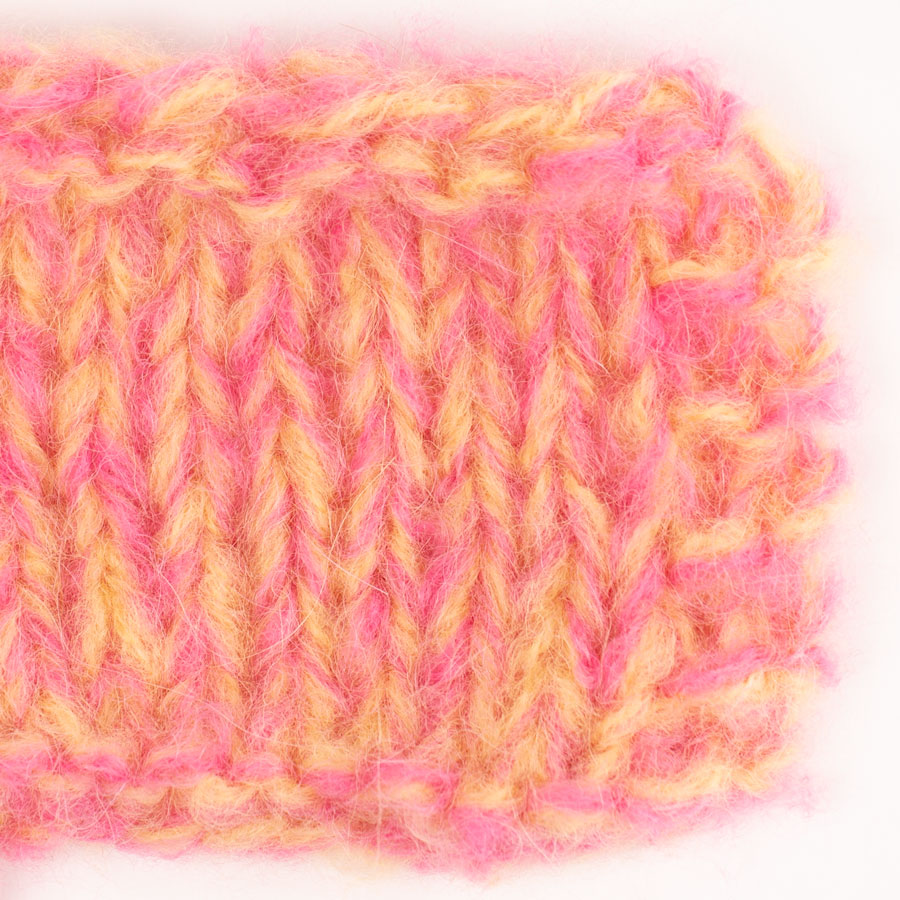
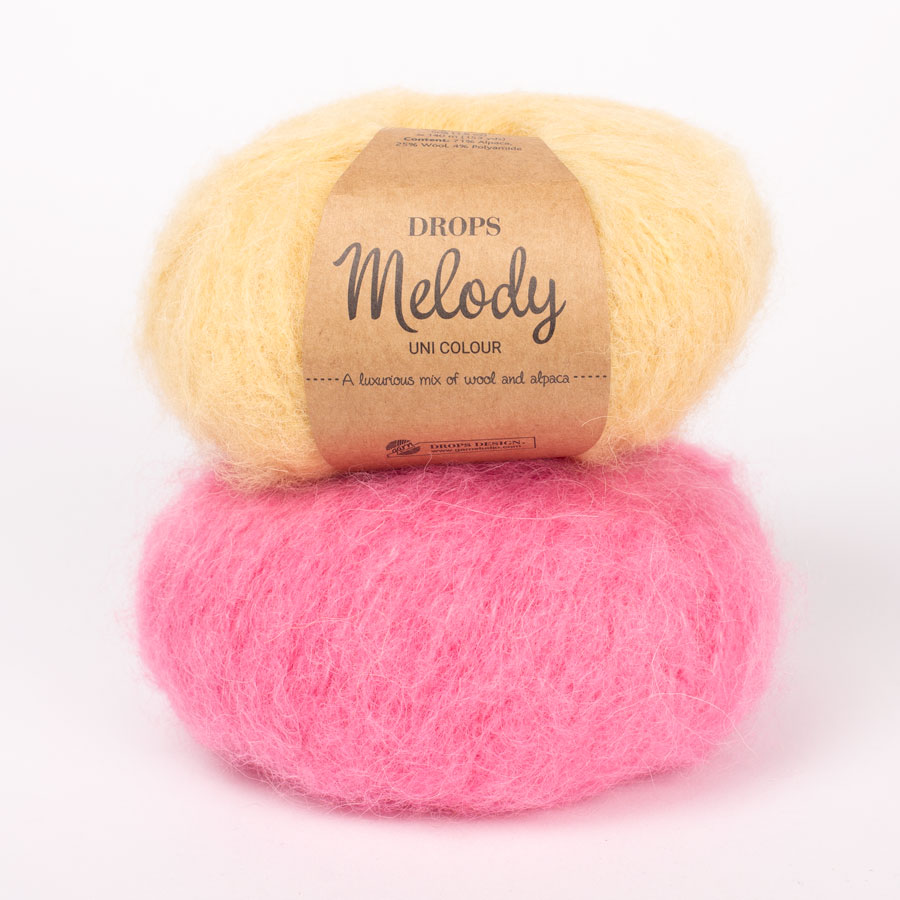
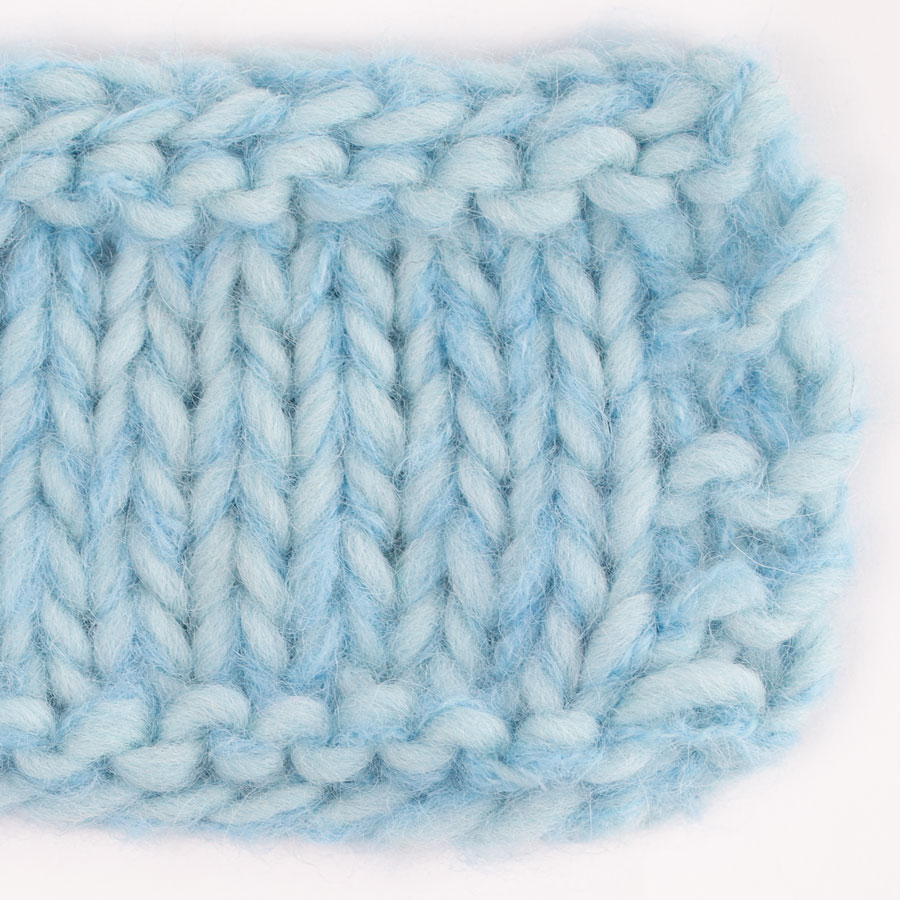
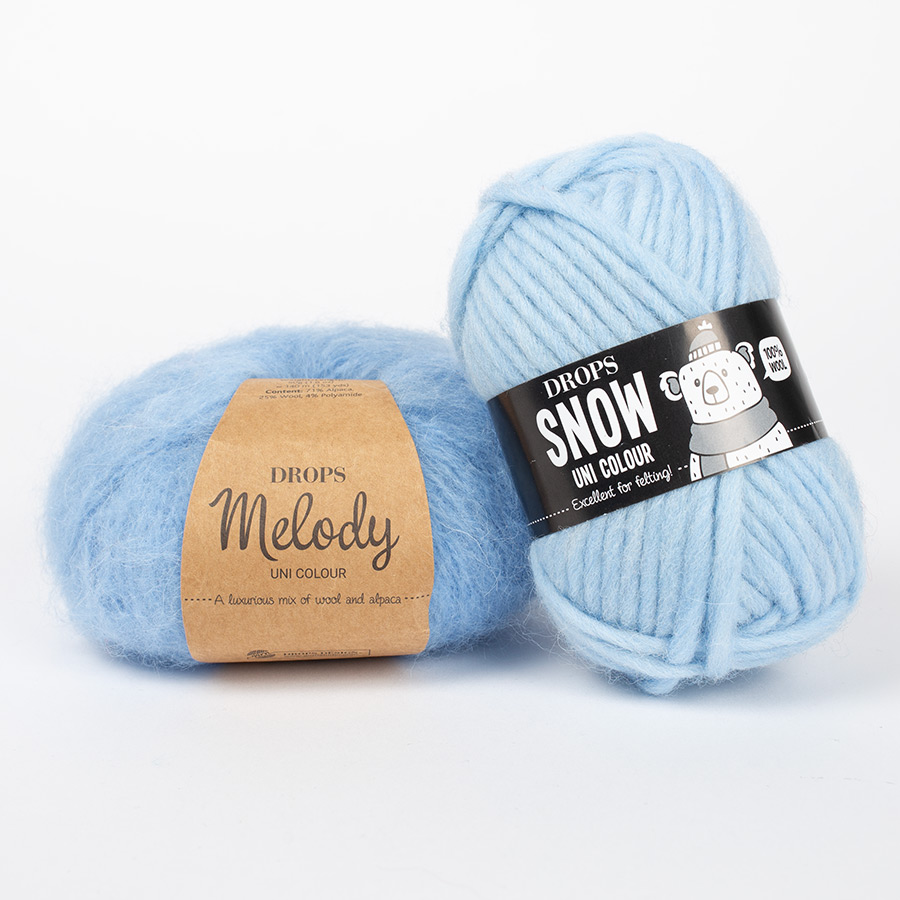
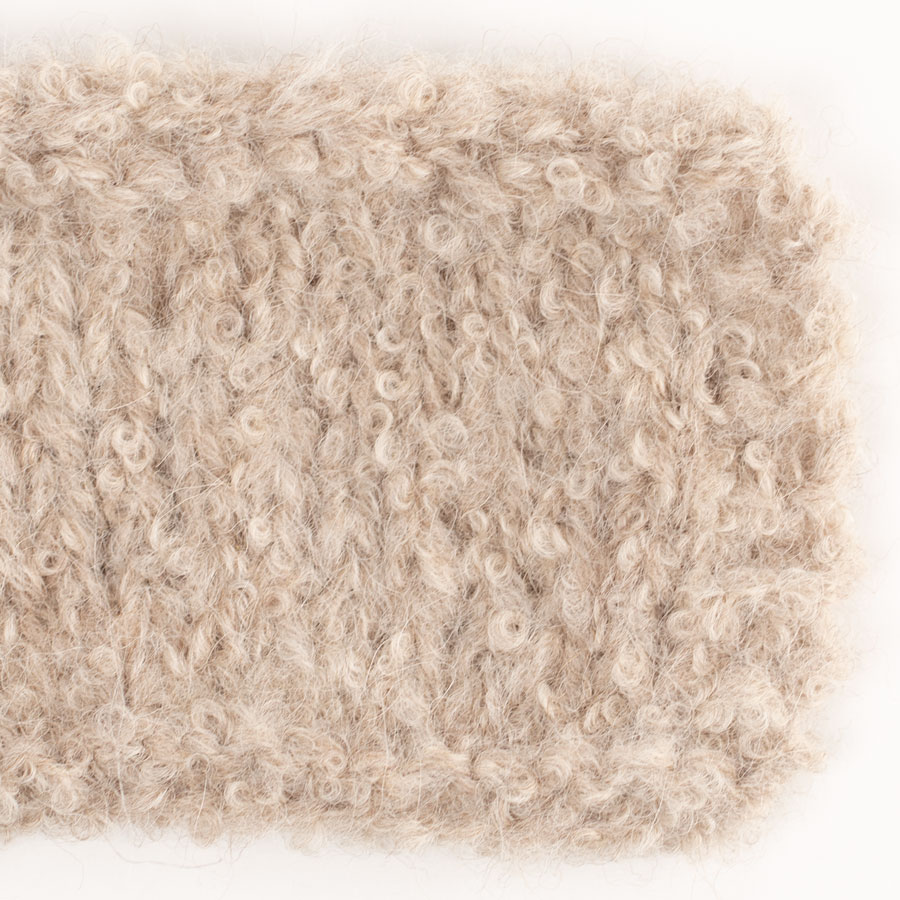
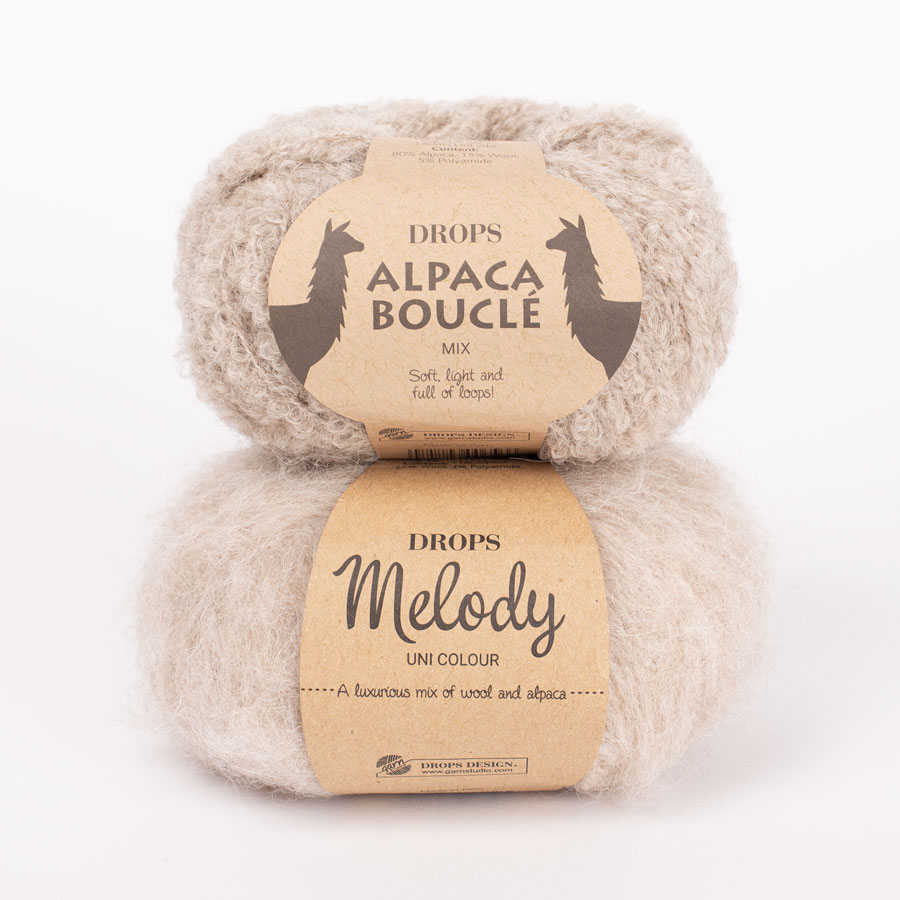
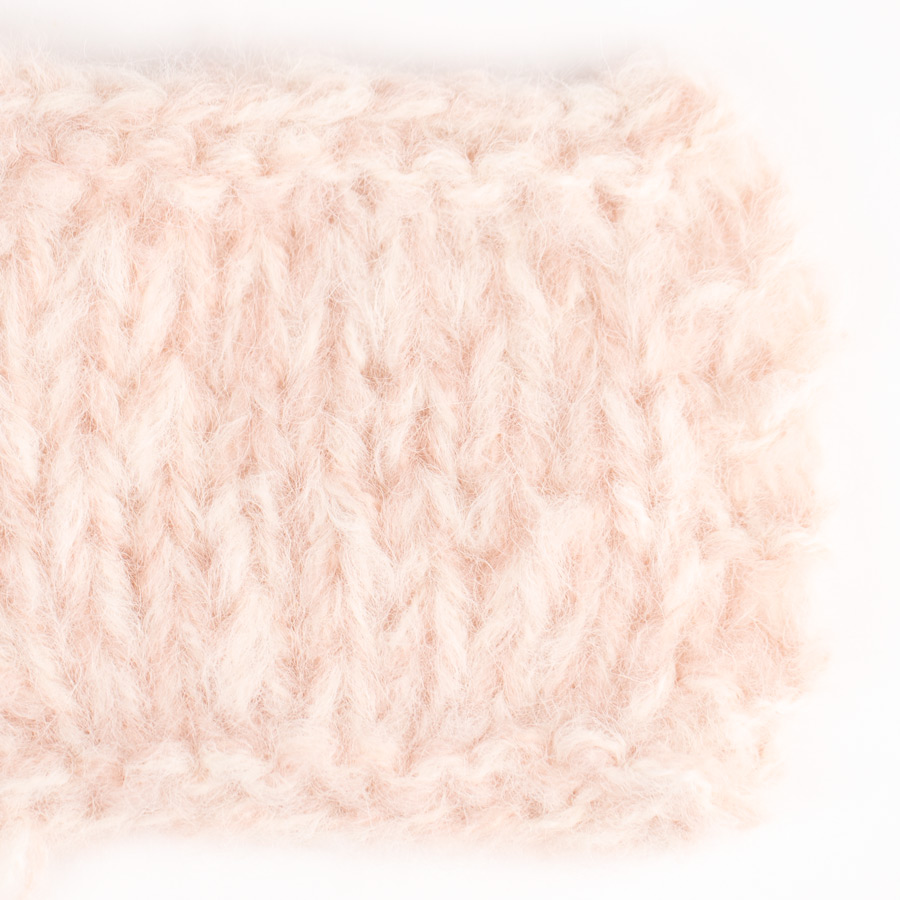
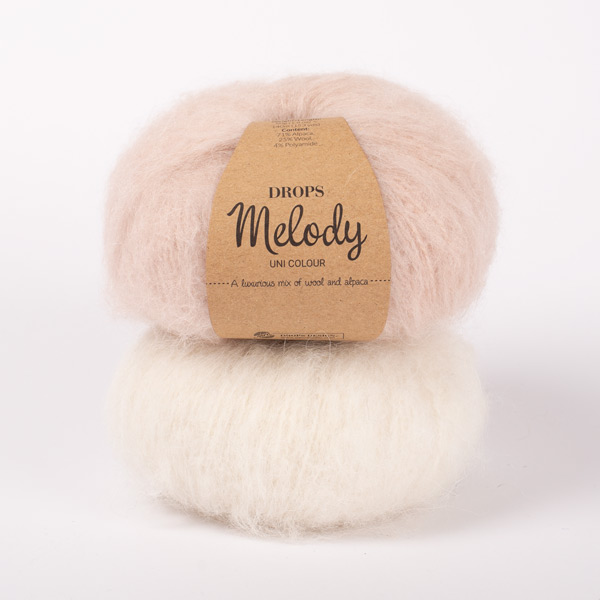

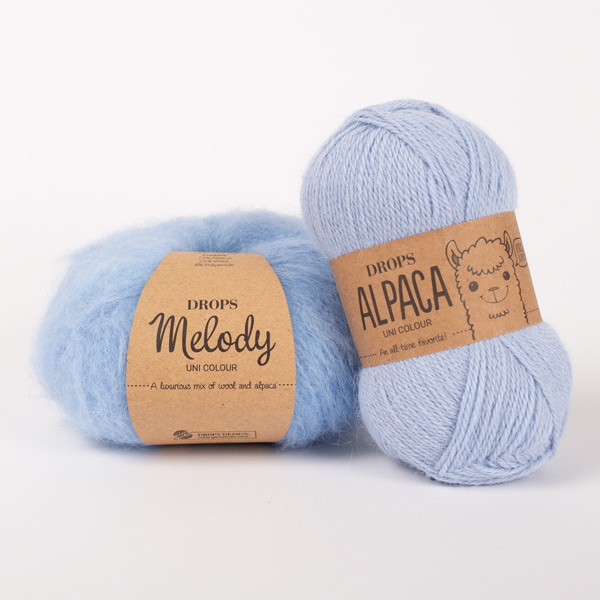



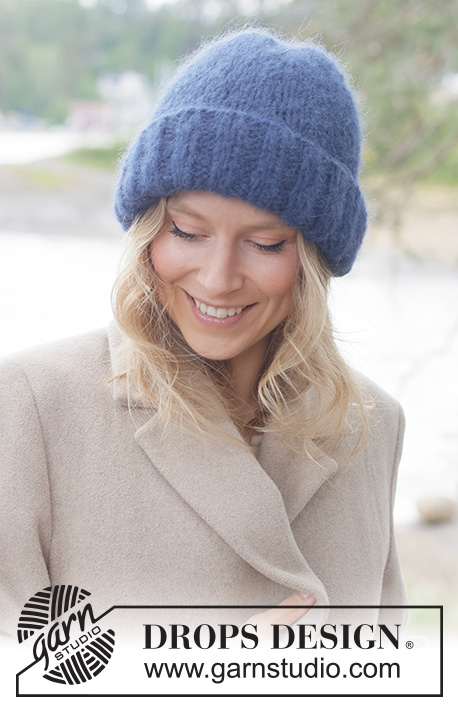
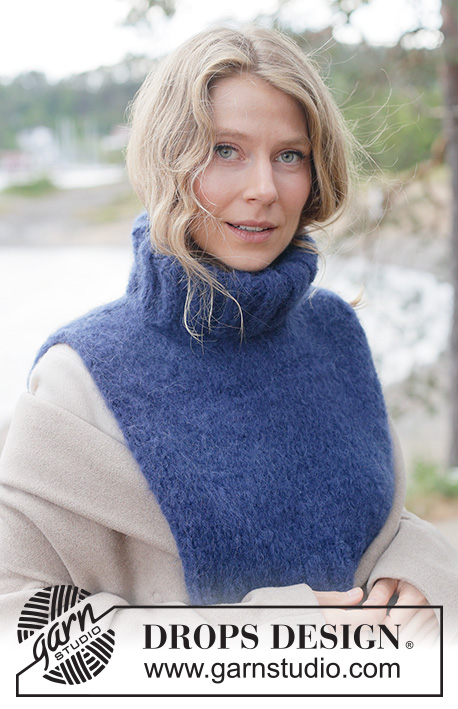
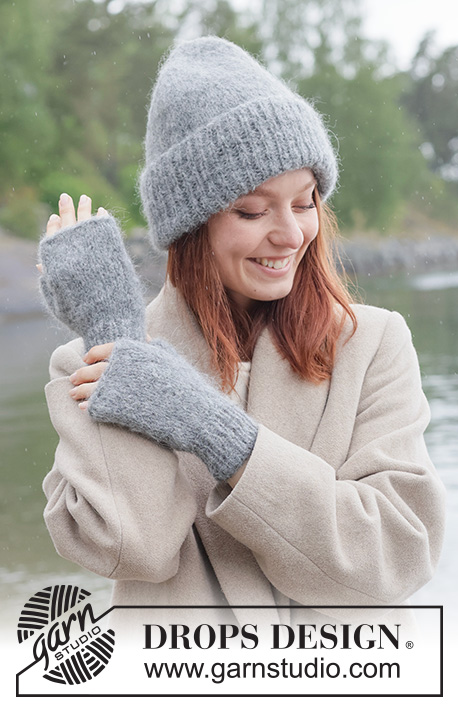



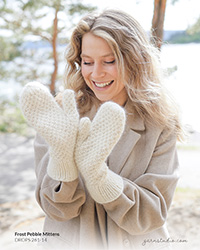


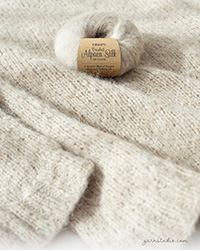
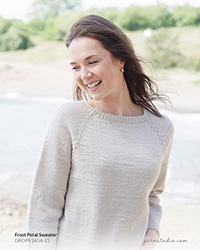
Ho realizzato un bellissimo Giacchino con questo filato ma al primo lavaggio si é totalmente infeltrito pur avendolo lavato in acqua fredda. Si può rimediare?
11.12.2017 - 15:12